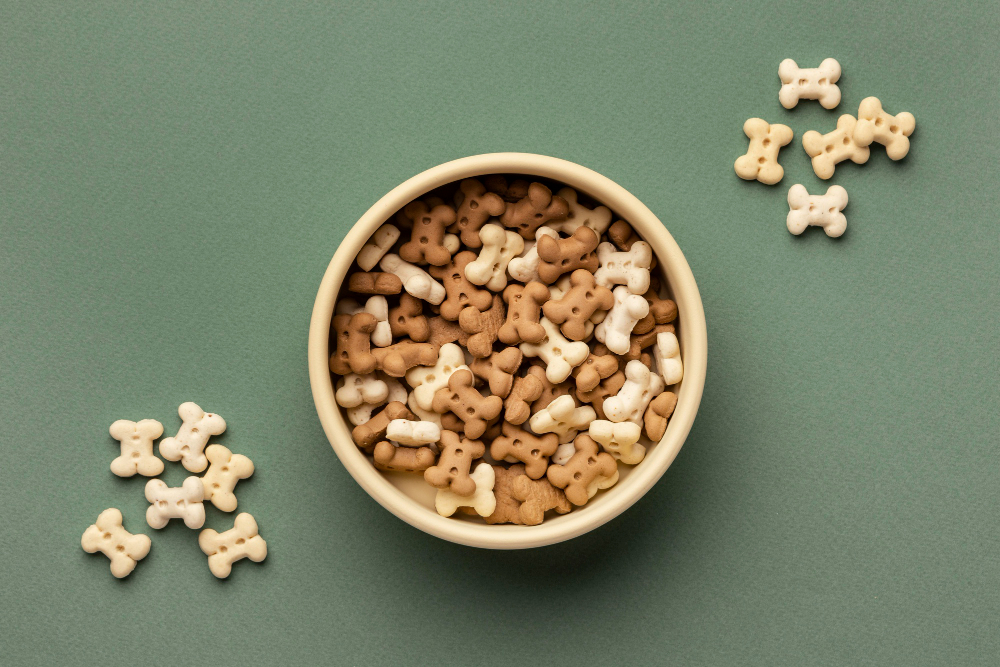Pet dry food, also known as kibble, is a staple in the diet of many domestic animals, including dogs, cats, birds, fish, and rabbits. The concept of animal feed dates back to the mid-17th century, where it was a simple concoction of breadcrumbs and meat pieces. By the 1800s, the feed had evolved into a form more akin to what we see on the market today.
Modern pet food is a complex blend of grains, animal and vegetable proteins, fats, vitamins, and minerals. These ingredients are carefully balanced to provide all the essential nutrients that pets need to stay healthy and active. Furthermore, pet food manufacturers also offer specialized feeds, such as those tailored for senior dogs or cats with specific health conditions.
The Making of Dry Pet Food: A Detailed Overview
The journey of pet dry food begins with the formulation phase. Here, an animal nutritionist meticulously balances the ingredients to create a diet that meets the nutritional needs of different species, ages, sizes, and special conditions. This includes diets tailored for specific illnesses.
Once the formulation is complete, the manufacturing process kicks off with the selection and mixing of ingredients in precise proportions. These ingredients are then ground and combined using a mixer.
The mixed ingredients are then sent to an extruder, a machine that continues the mixing process while also heating the mixture with steam. This process, akin to a large pressure cooker, expands the starch and forms a smooth, homogeneous mass. The dough is then shaped into various forms, depending on the type of feed and the species it’s intended for.
Finally, the shaped feed undergoes a drying process before being packaged in feed-specific bags, ready for distribution and sale. While this description simplifies the process, it’s important to note that the production of dry pet food is a complex procedure that ensures the delivery of high-quality, nutritionally balanced food for our pets.
Understanding the Types of Pet Food Available
Dry feeds, which contain a maximum of 10% moisture, are the most common type of pet food. They are easy to store and have a longer shelf life than wet foods. However, it’s crucial to ensure that pets consuming dry food have access to fresh, clean water, as some may struggle with chewing kibble or may have health issues related to a lack of water in their diet.
Wet feeds, on the other hand, contain about 80% water and are sold in cans or sachets. These feeds can be a more palatable option for some pets, especially those with taste issues due to comorbidities or advanced age. For instance, pets with kidney problems might benefit from wet food. However, wet feeds are typically more expensive and have a shorter shelf life than dry feeds. Also, the production process for wet feeds differs from that of dry feeds.
Key Ingredients in Pet Food
Pet food is composed of a variety of ingredients, which can vary depending on the type of animal, its age, size, and activity level. Here are some of the common ingredients found in pet food:
- Protein: This is a fundamental ingredient in any feed, necessary for growth and maintenance of animal muscles. Protein can be sourced from animal products like meat, poultry, fish, or eggs, or from plant sources like grains and legumes.
- Fat: An essential source of energy for animals, fat also improves the taste of the feed and keeps the animals’ coats healthy. Fats can be sourced from animal products like fish oil, or plant sources like sunflower oil.
- Fibers: These are crucial for maintaining the health of an animal’s gastrointestinal tract. Fibers can be sourced from plant sources like wheat and rice bran.
- Vitamins and Minerals: These are added to ensure that animals receive all the essential nutrients they need to stay healthy. They can be added synthetically or sourced naturally from fruits and vegetables.
In addition to these ingredients, additives are often included in pet food. These are chemical substances that improve or maintain specific characteristics of the diet. They include:
- Nutritional additives: These supplement the diet with nutrients that may be lacking in the initial formulation. For example, vitamin A is commonly added to ensure good eye health.
- Technological additives: These improve the quality of the feed or facilitate its handling. For example, antioxidants help maintain feed quality and prevent nutrient deterioration during storage.
- Zootechnical additives: These improve animal performance. For example, probiotics help maintain the health of the gastrointestinal tract and improve digestion.
It’s worth noting that some feeds, especially economical ones, may contain dyes. These are added solely to attract owners and do not provide any benefits to the animals.
Conclusion
In conclusion, the production of pet dry food is a meticulous process that ensures our pets receive a balanced, nutritious diet. The journey from raw ingredients to the final product involves careful formulation, precise mixing, and thorough processing. Whether you choose dry or wet food, it’s essential to select a high-quality feed that meets your pet’s specific nutritional needs.
For pet owners, understanding the process and ingredients involved in pet food production can lead to more informed decisions about their pets’ diet. It’s crucial to remember that while additives and dyes may make the food more appealing, they don’t necessarily contribute to the nutritional value. Always prioritize feeds that provide the essential nutrients your pet needs. Lastly, pet care extends beyond just providing the right food. It involves understanding their specific needs, especially as they age or deal with chronic conditions. For more insights, you can explore this resource on elderly pet care essentials. Additionally, understanding how to manage chronic conditions is crucial. This guide on managing chronic kidney disease in pets can equip you with the knowledge to provide the best care for your furry friends.

